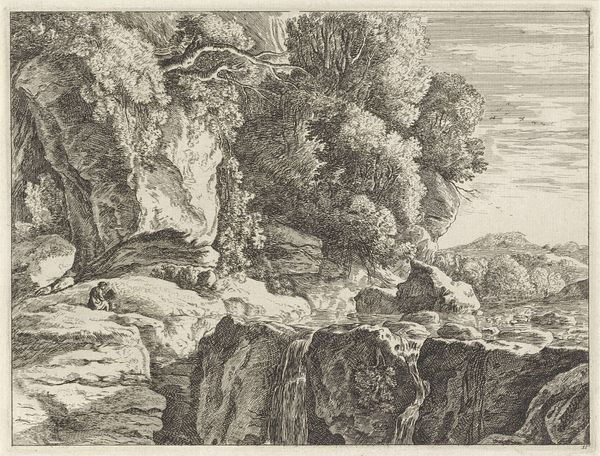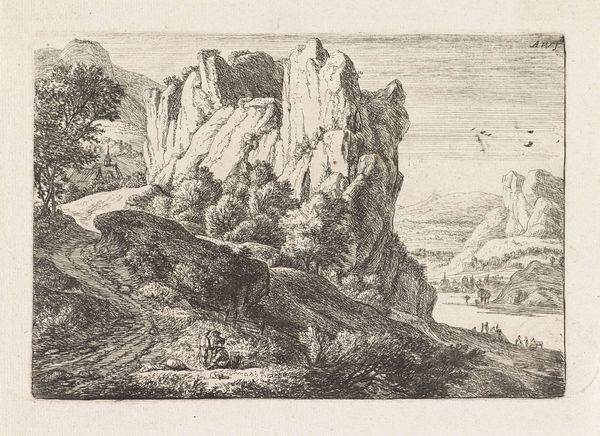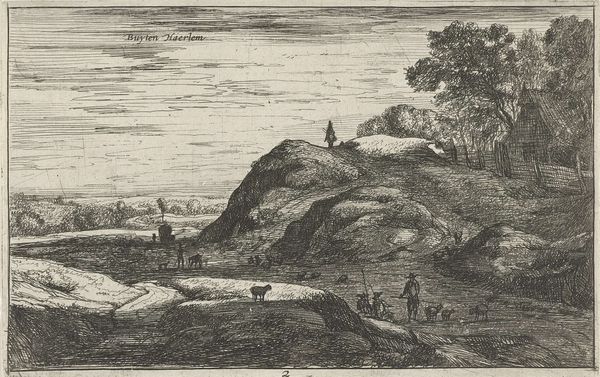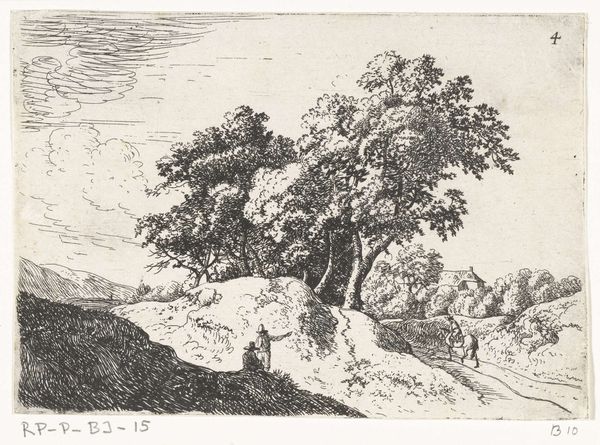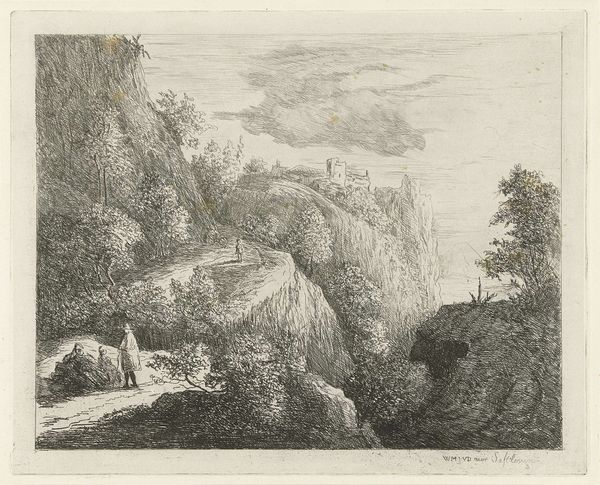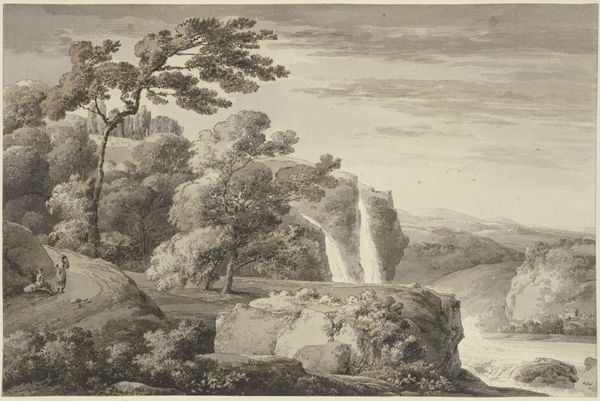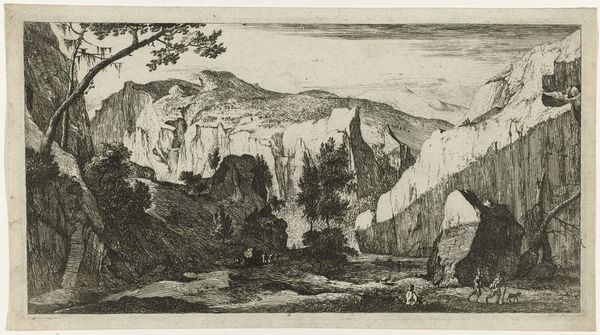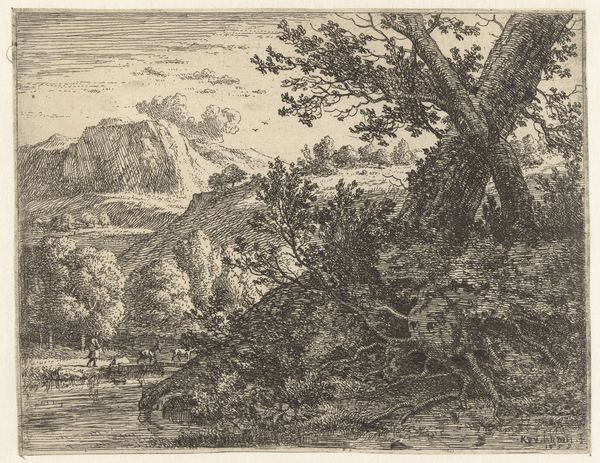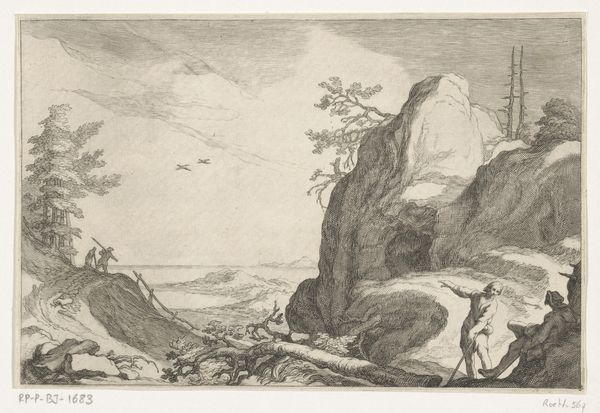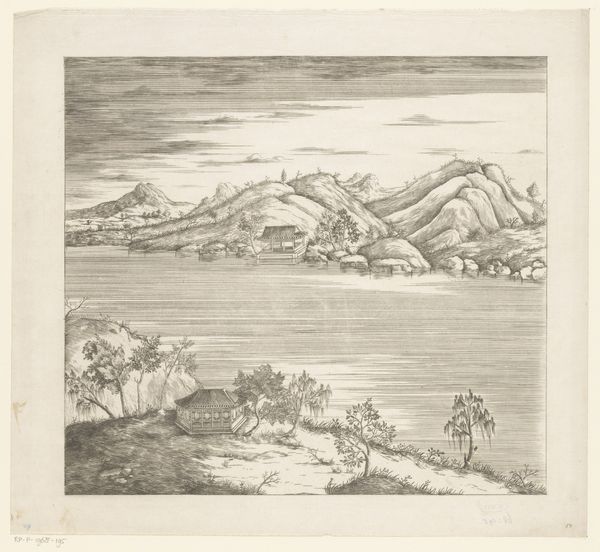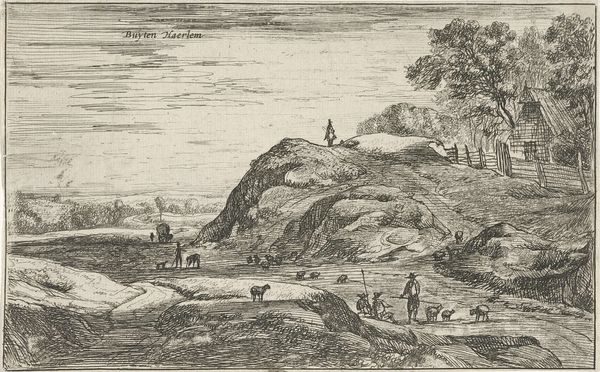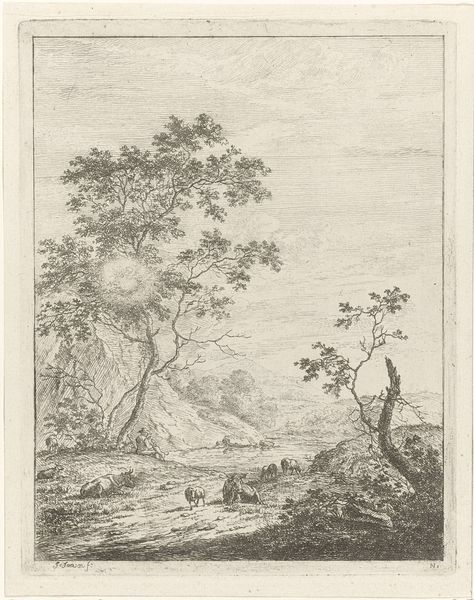
print, etching
#
baroque
# print
#
etching
#
landscape
Dimensions: height 130 mm, width 168 mm
Copyright: Rijks Museum: Open Domain
Editor: This etching by Roelant Roghman, "Mountain Landscape with a Cross," made sometime between 1673 and 1724, has a somber, almost theatrical quality to it. The stark contrasts and desolate setting evoke a sense of isolation. What historical context shapes how we should understand a scene like this? Curator: Well, think about the socio-political backdrop of the 17th and 18th centuries. This period witnessed significant religious and political upheavals. Landscapes, like this one, served more than just aesthetic purposes. They reflected the public anxieties and yearnings of the time. Where do you think this scene locates the viewer in relation to nature or to spirituality? Editor: It almost feels as if the tiny human figure in the foreground is overwhelmed by the immensity of the natural world and perhaps even by the symbolism of the cross. Is that something you see as well? Curator: Absolutely. And consider how prints functioned in the art world of the era. They were more accessible than paintings and thus carried a stronger public role, disseminating ideas and aesthetics. This landscape could represent a spiritual journey or a commentary on human vulnerability, readily available for wider consumption. Is this then also a work of personal expression, or primarily aimed to inform society? Editor: I hadn’t considered how accessible prints were at that time! That totally shifts my perspective on its intent. It seems like this artwork really acted as a reflection of larger cultural trends. Curator: Precisely! And hopefully that encourages further thinking about how institutions like museums shape our perception of the past too. Editor: Thanks, I'll definitely remember to consider these social and institutional elements.
Comments
No comments
Be the first to comment and join the conversation on the ultimate creative platform.


